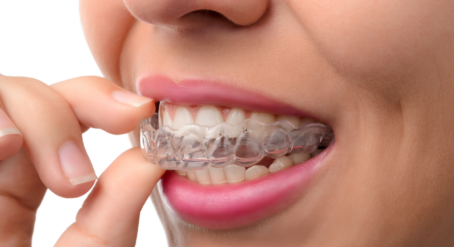You lived with braces for months, but every extra minute spent threading floss between the wires was worth it to be able to stride about with some nice, straight teeth.
But suddenly, disaster strikes. Or at least, that’s what it might feel like. For some reason, your teeth can’t seem to stay still. Ever so slowly, over weeks, months and years, they appear to be undoing the effects of the braces and shifting back to where they once were.
What on earth is going on? This article might help to explain…
Is it possible for teeth to shift?
Yes! In fact, not only is it possible for your teeth to shift over time – it’s inevitable. As a rule, your teeth are always moving forward towards the front and centre of your mouth, in a process known as “mesial drift”.
Why, though? Well, the answer is essential that teeth aren’t set in concrete. They’re housed in living, growing bones that are forever changing over the course of our lives.
And the way we live exerts its own pressures too. Whenever we talk, laugh, smile, sneeze, cough or chew, we cause the muscles of our face and mouth to move, and so thus add a tiny amount of pressure to our (teeth and) bones.
Teeth can also shift because of:
- late lower jaw growth, which can lead to inward tipping of the lower front teeth
- changes in the elasticity of the cheeks and lips and/or pressure from the tongue
- loss of gum tissue or bony support for the teeth through gum disease.
How do you know if your teeth are shifting?
Beyond the obviously visible cues, signs of teeth shifting can include:
- Mid-line shift of teeth. With correct tooth alignment, your two upper and lower front teeth should fall in the centre of your nose and eyebrows. An increase in asymmetry in one or both dental arches – known as midline drift – is a common sign of shifting teeth.
- Gum bleeding. May be a sign of periodontal (gum) problems, which often greatly increase the likelihood of teeth shifting.
- Gaps in your teeth. This is a common and easy-to-spot sign that your teeth are shifting. Gaps may also be a sign of developing periodontal (gum) problems.
- Tooth pain or sensitivity. If your teeth are more tender or more sensitive than usual, this could indicate shifting teeth.
- An uncomfortable or ill-fitting retainer. Your orthodontist will custom make your retainer to fit your well-aligned teeth perfectly. So, if your retainer no longer fits, this is a sure sign your teeth have shifted. Unfortunately, this is usually due to inadequate wear of your retainer.
I just have my braces removed. Could this be connected?
Yes. Teeth are attached to your jawbones with tiny, little ligaments (i.e periodontal ligaments) made out of elastic-type fibres. By exerting a subtle yet steady pressure over the course of months, braces move your teeth from their “natural” positions. These ligaments are what makes orthodontic treatment possible. However, they do have an “elastic memory” too!
This is one possible reason why our teeth can start to “spring back” following orthodontic treatment.
There is no “standard” amount of shifting. Most of the time, it’s pretty minimal: the ligaments and fibres just need to “settle down” into their new positions. But other times, movement can be pronounced. The process is unpredictable and can vary widely between individuals.
Either way, this is where your retainer comes in. A retainer is an orthodontic device designed to hold your beautifully aligned teeth in position. It is incredibly important that you wear your retainer exactly as your orthodontist prescribes – which is generally every night for the long term.
If you’re athletic, we also recommend that you wear a custom-fitted mouthguard to safeguard your newly straightened teeth during contact sports.
Is teeth-shifting something to worry about?
In and of itself: no. A certain degree of shifting is almost inevitable.
However, significant changes or shifting front teeth can potentially be a cause for concern.
It is also worth noting that other conditions like gum disease, diabetes and osteoporosis can sometimes exacerbate the degree of movement your teeth undergo.
What should I do about it?
It’s always worth consulting a dentist to check on the health of your teeth and gums and sometimes shifting can be rectified by being more conscientious with your retainer. To avoid going back to braces, it is vital that you wear them as often as your orthodontist prescribed. Prevention is always key!
Brushing and flossing regularly will prevent food and bacteria from building up, and therefore avoid issues such as gum disease that can cause teeth shifting significantly. Finally, if your retainer no longer fits or is uncomfortable you may need to book a check-up with your orthodontist to make an assessment about whether this needs to be updated.









